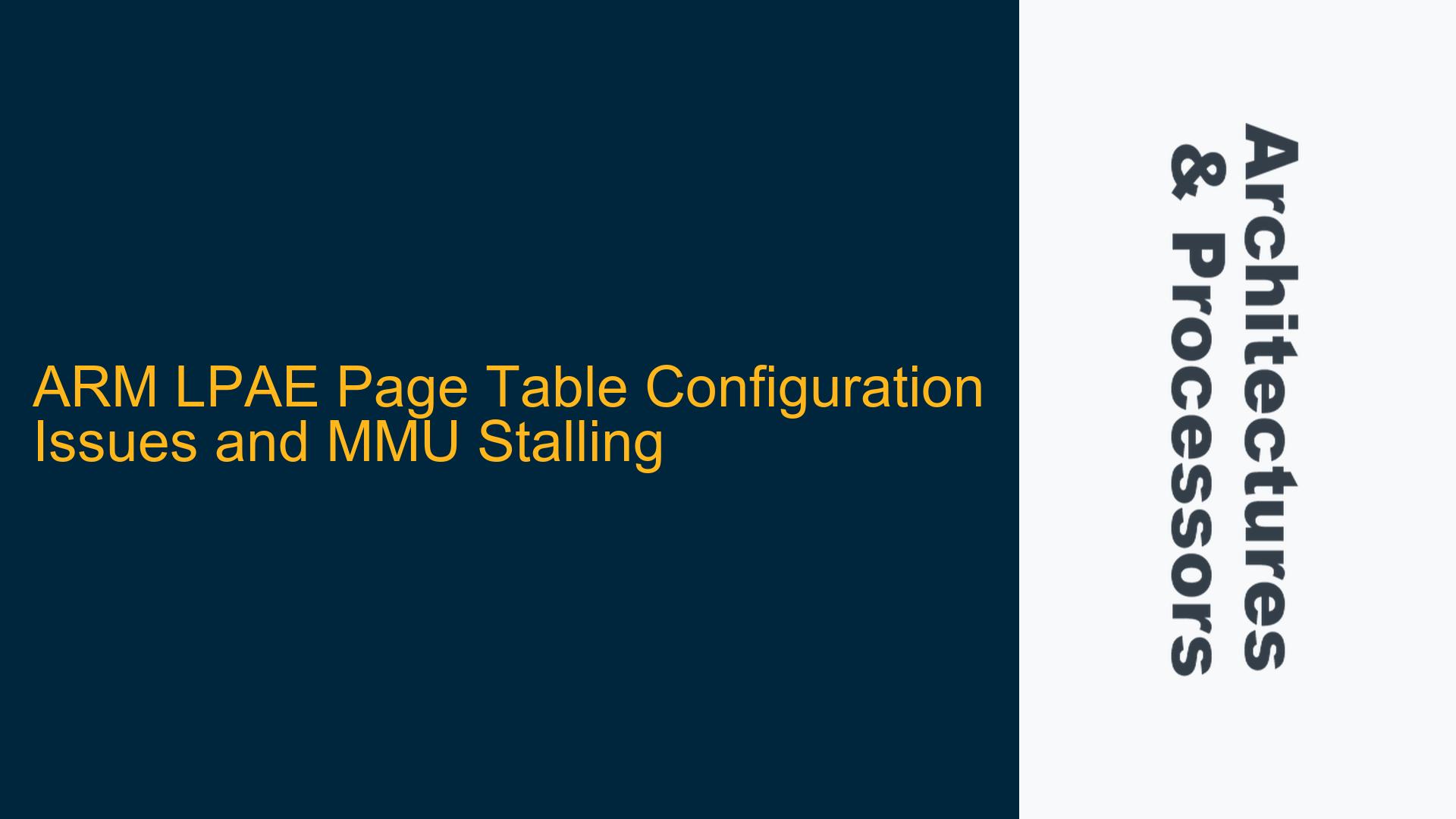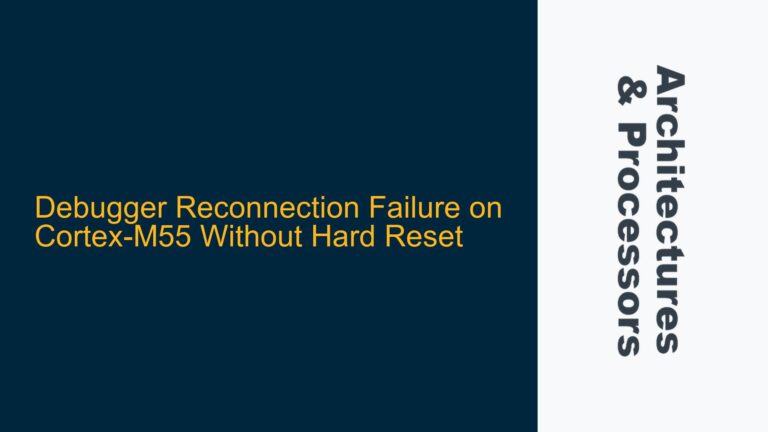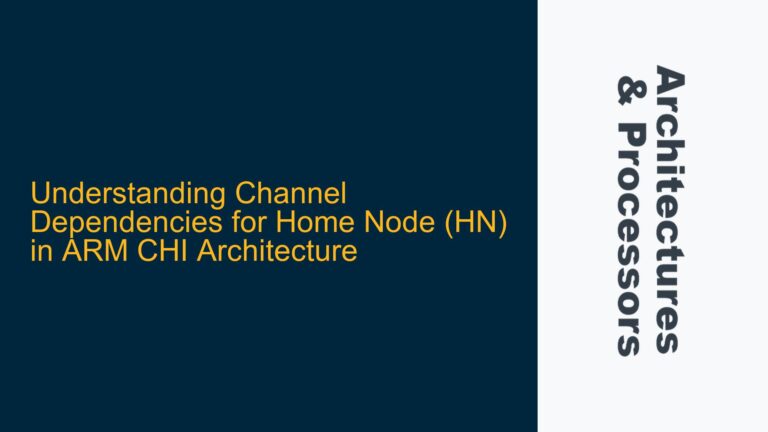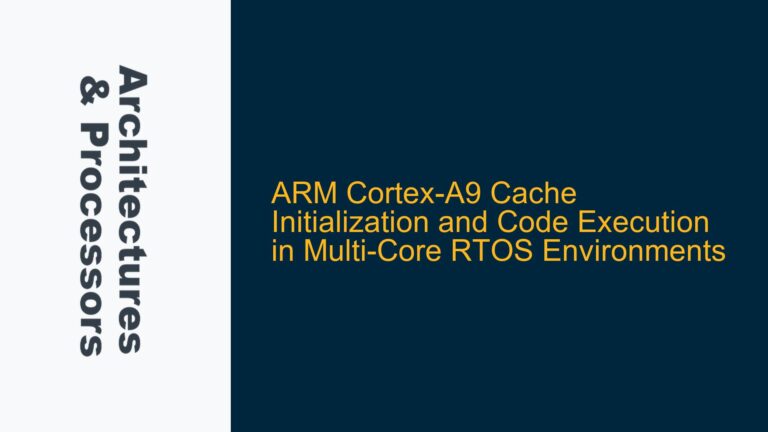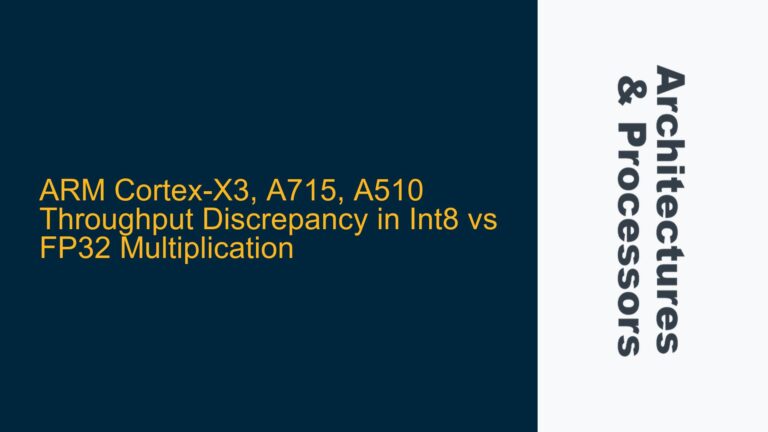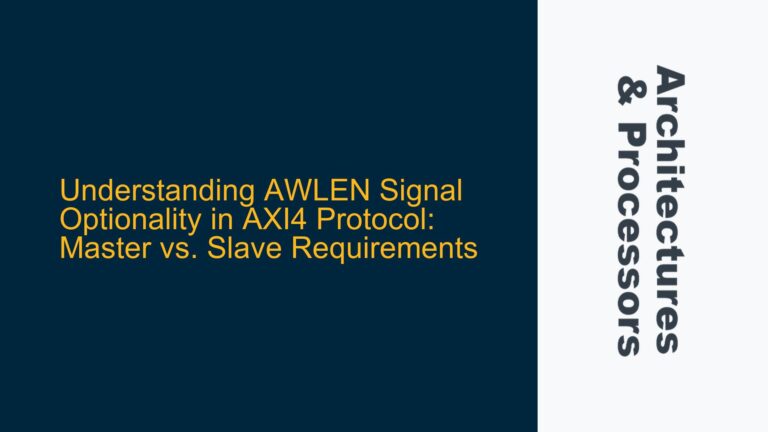ARM Cortex-A LPAE Page Table Setup and MMU Translation Failure
When implementing Large Physical Address Extension (LPAE) on an ARM Cortex-A processor, the configuration of page tables and the Memory Management Unit (MMU) is critical for enabling access to physical addresses beyond the standard 32-bit limit. The LPAE feature extends the physical address space to up to 40 bits, but this requires careful setup of the Translation Table Base Registers (TTBRs), Translation Table Base Control Register (TTBCR), and the page table hierarchy. A common issue arises when transitioning from a standard 32-bit physical address space to an LPAE-enabled configuration, where the MMU fails to translate virtual addresses correctly, leading to a system stall or a series of MMU faults.
The core of the problem lies in the proper initialization of the LPAE page tables and the correct setting of the TTBCR.EAE bit to enable long descriptors. The page table hierarchy in LPAE mode consists of three levels: Level 1, Level 2, and Level 3. Each level must be correctly indexed by the virtual address bits, and the descriptors must be properly formatted with the correct attributes. Additionally, the TTBR0 and TTBR1 registers must be configured to point to the base of the Level 1 page table, and the TTBCR must be set to enable LPAE and define the translation table walk.
In the described scenario, the system stalls when attempting to execute the first function using a virtual address after enabling the MMU. This indicates that the MMU is unable to translate the virtual address to a physical address, likely due to an incorrect page table configuration or an issue with the TTBCR settings. The following sections will delve into the possible causes and provide detailed troubleshooting steps to resolve the issue.
Incorrect TTBCR Configuration and Page Table Descriptor Formatting
One of the primary causes of MMU translation failure in LPAE mode is an incorrect configuration of the TTBCR register. The TTBCR controls the behavior of the translation table walk, including the enablement of LPAE through the EAE bit. If the EAE bit is not set correctly, the MMU will not recognize the long descriptor format, leading to translation failures. Additionally, the TTBCR must be configured to define the size of the translation table regions and the behavior of TTBR0 and TTBR1.
Another critical aspect is the formatting of the page table descriptors. In LPAE mode, each descriptor must have the lowest two bits set to 0x3 to indicate a valid descriptor. The descriptors must also contain the correct physical address of the next level table or the final physical page. If the descriptors are not formatted correctly, the MMU will not be able to traverse the page table hierarchy, resulting in a translation fault.
The page table hierarchy must also be correctly indexed by the virtual address bits. In LPAE mode, Level 1 is indexed by bits 31:30 of the virtual address, Level 2 by bits 29:21, and Level 3 by bits 20:12. If the page tables are not correctly aligned or indexed, the MMU will not be able to locate the correct descriptors, leading to a stall or fault.
Verifying TTBCR Settings and Page Table Alignment
To resolve the issue of MMU translation failure in LPAE mode, the first step is to verify the settings in the TTBCR register. Ensure that the EAE bit is set to 1 to enable long descriptors and that the T0SZ and T1SZ fields are correctly configured to define the size of the translation table regions. The TTBCR should also be checked to ensure that TTBR1 is disabled if it is not being used, as this can cause conflicts in the translation table walk.
Next, the page table descriptors must be carefully examined to ensure they are correctly formatted. Each descriptor should have the lowest two bits set to 0x3, and the physical address fields should contain the correct addresses of the next level tables or the final physical pages. The alignment of the page tables must also be verified, as misalignment can prevent the MMU from correctly traversing the hierarchy.
Finally, the virtual address indexing of the page tables must be checked. Ensure that the Level 1 table is correctly indexed by bits 31:30 of the virtual address, the Level 2 table by bits 29:21, and the Level 3 table by bits 20:12. If any of these indexes are incorrect, the MMU will not be able to locate the correct descriptors, leading to a translation fault.
Implementing Correct LPAE Page Table Configuration and MMU Enablement
Once the TTBCR settings and page table descriptors have been verified, the next step is to implement the correct LPAE page table configuration and enable the MMU. This involves setting the TTBR0 register to point to the base of the Level 1 page table and ensuring that the TTBCR.EAE bit is set to 1 before enabling the MMU. The MMU should then be enabled, and the system should attempt to execute the first function using a virtual address.
If the system continues to stall or experience MMU faults, it is important to check the Data Fault Status Register (DFSR) and Instruction Fault Status Register (IFSR) for more detailed information on the cause of the fault. These registers can provide insights into whether the fault is due to a translation fault, permission fault, or alignment fault, allowing for more targeted troubleshooting.
In summary, the key to resolving MMU translation failures in LPAE mode lies in the correct configuration of the TTBCR register, proper formatting of the page table descriptors, and accurate indexing of the page tables by the virtual address bits. By carefully verifying these settings and implementing the correct configuration, the MMU should be able to successfully translate virtual addresses to physical addresses, allowing the system to operate as intended.
Detailed Troubleshooting Steps for LPAE Page Table Configuration
To ensure a comprehensive resolution to the issue, the following detailed troubleshooting steps should be followed:
-
Verify TTBCR Configuration:
- Check that the EAE bit is set to 1 to enable long descriptors.
- Ensure that the T0SZ and T1SZ fields are correctly configured to define the size of the translation table regions.
- Confirm that TTBR1 is disabled if it is not being used.
-
Examine Page Table Descriptors:
- Verify that each descriptor has the lowest two bits set to 0x3.
- Ensure that the physical address fields contain the correct addresses of the next level tables or the final physical pages.
- Check the alignment of the page tables to ensure they are correctly aligned for the MMU to traverse.
-
Validate Virtual Address Indexing:
- Confirm that the Level 1 table is correctly indexed by bits 31:30 of the virtual address.
- Ensure that the Level 2 table is correctly indexed by bits 29:21.
- Verify that the Level 3 table is correctly indexed by bits 20:12.
-
Set TTBR0 and Enable MMU:
- Set the TTBR0 register to point to the base of the Level 1 page table.
- Ensure that the TTBCR.EAE bit is set to 1 before enabling the MMU.
- Enable the MMU and attempt to execute the first function using a virtual address.
-
Check DFSR and IFSR for Fault Information:
- If the system stalls or experiences MMU faults, check the DFSR and IFSR registers for detailed fault information.
- Use the fault information to identify whether the issue is due to a translation fault, permission fault, or alignment fault.
By following these detailed troubleshooting steps, the issue of MMU translation failure in LPAE mode can be systematically identified and resolved, ensuring that the system operates correctly with extended physical address capabilities.
